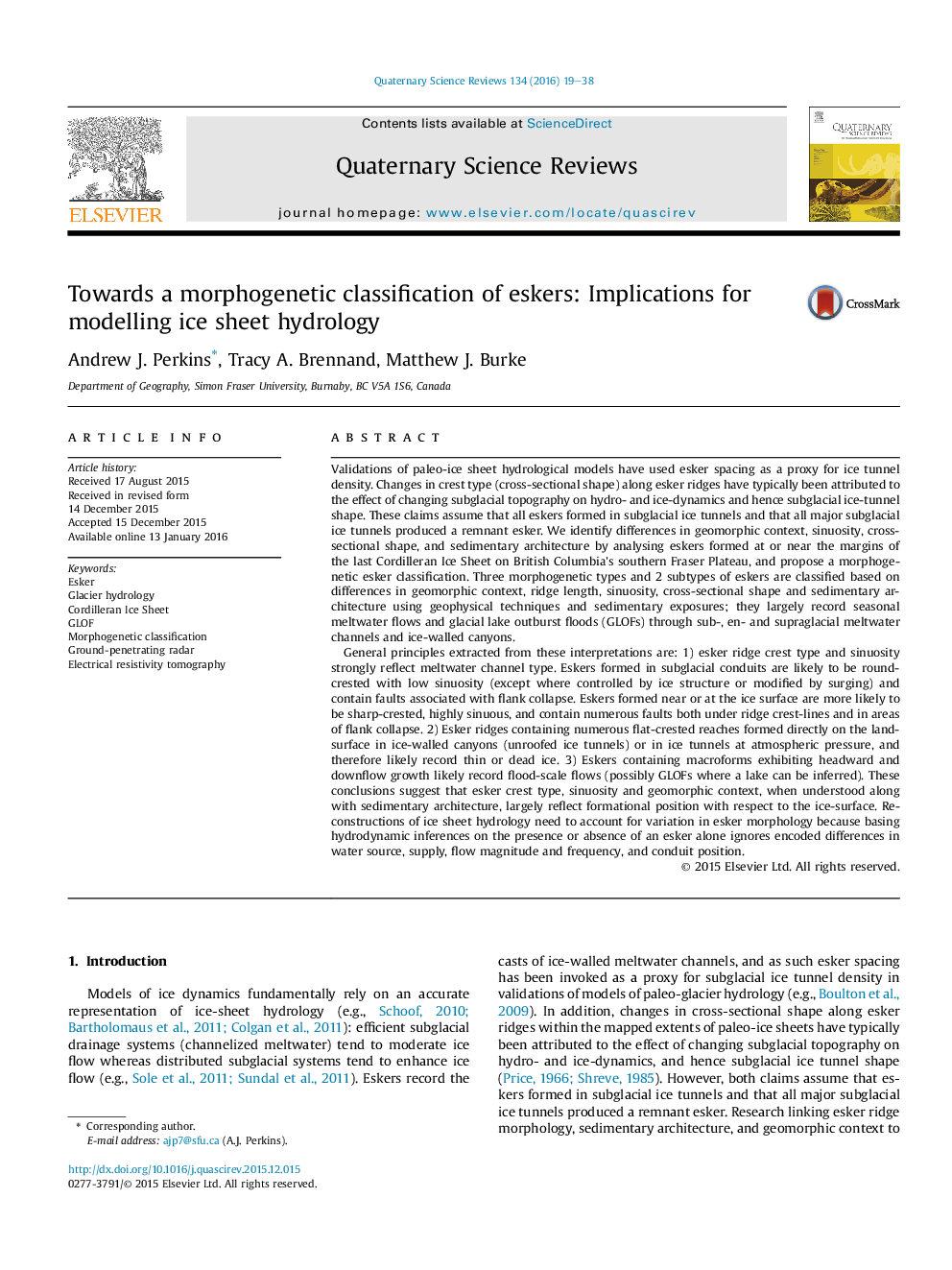| کد مقاله | کد نشریه | سال انتشار | مقاله انگلیسی | نسخه تمام متن |
|---|---|---|---|---|
| 6445471 | 1640801 | 2016 | 20 صفحه PDF | دانلود رایگان |
عنوان انگلیسی مقاله ISI
Towards a morphogenetic classification of eskers: Implications for modelling ice sheet hydrology
ترجمه فارسی عنوان
به سمت طبقه بندی مورفوژنیک اسکر: پیامدهای مدل سازی هیدرولوژی یخ
دانلود مقاله + سفارش ترجمه
دانلود مقاله ISI انگلیسی
رایگان برای ایرانیان
کلمات کلیدی
موضوعات مرتبط
مهندسی و علوم پایه
علوم زمین و سیارات
زمین شناسی
چکیده انگلیسی
General principles extracted from these interpretations are: 1) esker ridge crest type and sinuosity strongly reflect meltwater channel type. Eskers formed in subglacial conduits are likely to be round-crested with low sinuosity (except where controlled by ice structure or modified by surging) and contain faults associated with flank collapse. Eskers formed near or at the ice surface are more likely to be sharp-crested, highly sinuous, and contain numerous faults both under ridge crest-lines and in areas of flank collapse. 2) Esker ridges containing numerous flat-crested reaches formed directly on the land-surface in ice-walled canyons (unroofed ice tunnels) or in ice tunnels at atmospheric pressure, and therefore likely record thin or dead ice. 3) Eskers containing macroforms exhibiting headward and downflow growth likely record flood-scale flows (possibly GLOFs where a lake can be inferred). These conclusions suggest that esker crest type, sinuosity and geomorphic context, when understood along with sedimentary architecture, largely reflect formational position with respect to the ice-surface. Reconstructions of ice sheet hydrology need to account for variation in esker morphology because basing hydrodynamic inferences on the presence or absence of an esker alone ignores encoded differences in water source, supply, flow magnitude and frequency, and conduit position.
ناشر
Database: Elsevier - ScienceDirect (ساینس دایرکت)
Journal: Quaternary Science Reviews - Volume 134, 15 February 2016, Pages 19-38
Journal: Quaternary Science Reviews - Volume 134, 15 February 2016, Pages 19-38
نویسندگان
Andrew J. Perkins, Tracy A. Brennand, Matthew J. Burke,
